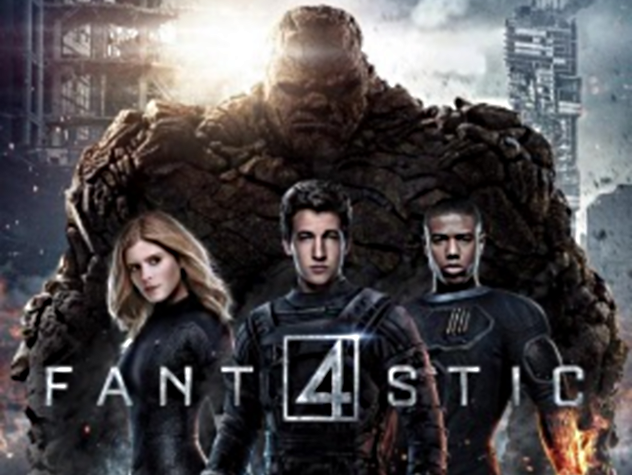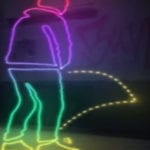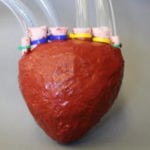 Misconceptions
Misconceptions  Misconceptions
Misconceptions  History
History 10 Amazing Roman Epitaphs
 Weird Stuff
Weird Stuff 10 Niche Subcultures That Are More Popular Than You Might Think
 Mysteries
Mysteries 10 Tragic Disappearances and Deaths in Joshua Tree National Park
 History
History 10 Ways Childhood Really Sucked in the Old West
 Music
Music 10 Name Origins of Famous Bands from the 1990s
 Religion
Religion 10 Biggest Turnarounds by the Catholic Church
 Weird Stuff
Weird Stuff 10 Unbelievable Times Laws Had Unintended Consequences
 Humans
Humans Ten Historic Women Who Deserve Way More Credit Than They Got
 Movies and TV
Movies and TV 10 Films That Spawned Major Lawsuits
 Misconceptions
Misconceptions 10 Phony Myths and Urban Legends That Just Won’t Die
 History
History 10 Amazing Roman Epitaphs
 Weird Stuff
Weird Stuff 10 Niche Subcultures That Are More Popular Than You Might Think
Who's Behind Listverse?

Jamie Frater
Head Editor
Jamie founded Listverse due to an insatiable desire to share fascinating, obscure, and bizarre facts. He has been a guest speaker on numerous national radio and television stations and is a five time published author.
More About Us Mysteries
Mysteries 10 Tragic Disappearances and Deaths in Joshua Tree National Park
 History
History 10 Ways Childhood Really Sucked in the Old West
 Music
Music 10 Name Origins of Famous Bands from the 1990s
 Religion
Religion 10 Biggest Turnarounds by the Catholic Church
 Weird Stuff
Weird Stuff 10 Unbelievable Times Laws Had Unintended Consequences
 Humans
Humans Ten Historic Women Who Deserve Way More Credit Than They Got
 Movies and TV
Movies and TV 10 Films That Spawned Major Lawsuits
10 Glaringly Obvious Uses Of CGI In Movies And TV
In the last 30 years, computer-generated imagery, or CGI, has become so advanced that in most cases, you’ll never even know that the things you see on the screen are just a bunch of tennis balls and green blocks. Entire cities filled with people are nothing more than a bunch of ones and zeroes entered into a computer to trick you into thinking they’re real. It’s truly impressive seeing just how far we’ve advanced in such a small amount of time, but we’re not here to talk about all of those impressive special effects. This list is about big-budget movies that completely blew it in the effects department.
10 Wolverine’s Claws In X-Men Origins
Hugh Jackman has played Wolverine since 2000 without anyone being cast to replace him over an impressive and unmatched 15 years. While he’s insisting that the third Wolverine movie will be the last time that he dons his claws, there’s already a film in the franchise where he didn’t wear his patented adamantium claws. X-Men Origins: Wolverine wasn’t exactly the cream of the crop of the X-Men franchise, garnering the lowest score of all the X-Men movies on Rotten Tomatoes, but its greatest offense is what it did to Wolverine’s claws.
Originally attached to Hugh Jackman’s hands as real props, Wolverine’s claws were replaced completely with CGI. What you’re seeing above isn’t an image from an extremely unfinished work print that leaked online before the film’s release; it’s the actual final product that made its way to theaters. They’re obviously vastly inferior to the practical claw prosthetics of the previous films.
Even more confusing in the inclusion of the character The Blob in the movie. Nearly everything about him is done practically with a bodysuit and makeup, and it is downright seamless. How a movie with a budget of $150 million could let something as important as Wolverine’s claws slip through the cracks while putting so much work into a side character is beyond comprehension.
9 The Fountain Of Youth Is Real, And It’s Digital
Since the dawn of man, humans have been looking for a way to be young forever. Plenty of jellyfish apparently know the secret to youthful immortality, but we’ve come up bunk on the subject. While we humans can’t fight the crashing waves of time itself yet, animators have been fighting for decades to bring back celebrities who have long since passed their prime, and it hasn’t exactly been pretty. When the film Tron: Legacy digitally created a CGI version of young Jeff Bridges, most people passed him off as some insanely creepy, plastic-faced monstrosity because it was supposed to be a game program trying to pass off as human. That idea was thrown out the window, however, when a flashback scene included the plastic Jeff Bridges in the real world to show him saying goodbye to his son.
While Tron: Legacy had some pretty jarring CGI, there is no other film in recent history that has performed the de-aging process as poorly as Grudge Match. The film opens with both Sylvester Stallone and Robert De Niro rendered in their primes for a fight scene that took place 30 years prior. While that could have been an amazing fight scene, it ended up being a horror show. It was as if two wax figures somehow came to life and then got stuck under a heat lamp for far too long, their melted faces sneering in disgust at the world in every scene.
While the two wax boxers are perfect examples of the uncanny valley, Ant-Man is a nearly perfect example of the de-aging process done right. With that film’s effects, you would assume that really was a younger Michael Douglas in front of the camera as long as you didn’t stare at him for too long.
8 Nancy Marchand Dies And Still Appears In The Sopranos
The death of an actor or actress can be devastating for the production of a television series or movie, whether it means replacing them, rewriting the script, or cutting up scenes filmed before their death to accommodate what you will be unable to film afterward. With the power of CGI, however, the dead are rising again. The most obvious case of someone being brought back would be the stunningly realistic CGI Audrey Hepburn used to sell chocolates (seriously) in the UK back in 2013.
That wasn’t the first time that a company used special effects to bring the dead back to life. Thirteen years prior, Nancy Marchand was brought back to play the role of Tony’s mother, Livia Soprano, in the eponymous HBO series. Spending hundreds of thousands of dollars for just a few seconds of screen time, animators went frame by frame and digitally added Nancy Marchand’s head into a scene opposite James Gandolfini, using unused outtakes and deleted scenes to create the audio needed for the stilted conversation. As you can see from the clip provided, the effect was quite jarring. The showrunners claimed that the scene was done to avoid the soap opera trope of characters dying offscreen to explain Nancy’s absence on the show. Then, they killed her character offscreen shortly after.
7 Escape From L.A. Escapes From Smart And Practical Effects
When Escape from New York first released, it didn’t exactly have that great of a budget. A measly $6 million was allotted to the studio to make everything, and they pinched every penny to get their scenes to work. One scene in particular was the 3-D scan of New York. Doing it traditionally with a computer in the 1980s would have more or less eaten up their entire budget, so John Carpenter simply got some green tape and put it all over a model of New York City. The end result looked pretty much identical to what would have cost a massive sum of money to do in a computer. It was brilliant and cost-effective.
When Escape from New York became a surprise smash hit, the studio was given a budget of $50 million for a bigger and badder sequel. With CGI already getting cheaper, and the action scenes getting more over-the-top to up the ante, it was only natural for the crew to make the jump to computer-generated scenes. Unfortunately, they didn’t nail the landing on their jump, and audiences ended up with scenes that you’d expect from a discount theme park a few days from being shut down for code violations. A prime example is this scene of a shark attacking Plissken’s physics-defying submarine outside of a sunken Universal Studios.
6 Lost—CGI So Bad You Can Count The Polygons
It isn’t fair to expect a television series to have the most realistic CGI. They have strict budgets and ridiculous deadlines to get things done as quickly as possible. With that said, Lost broke all the rules with its first season, spending so much money on a single episode that the person who green-lit it ended up being fired, even though the episode spawned a series that ran six seasons on a channel known for canceling everything after the first few episodes. In fact, the first episode was so well done that footage shown from it actually fooled news stations into believing that they had acquired recordings of an actual plane exploding.
That’s what makes this use of CGI later in the series so appalling. In the fifth-season episode “Follow the Leader,” the survivors board a submarine that’s set to leave the island. You can literally count the polygons on the CGI submarine. For those of you unaware, polygons are what give a 3-D object its shape. The more polygons you have, the better the object will look, up to a certain point. If you can look at a professional model and count the polygons on a single hand, then there are absolutely not enough polygons on the object.
5 Neo Crashes The Matrix
Parodied countless times for far longer than anyone should ever have allowed, the first Matrix movie changed the filmmaking landscape with its innovative use of CGI and impossible camera angles. Unfortunately, the same could not be said for the film’s overly complicated and deus ex machina–laden sequels. While they were still fun, they didn’t wow audiences with any sort of special effects or mind-bending CGI. In fact, Matrix Reloaded‘s CGI was panned for its cartoonish and video game–like special effects during the battle between Neo and an endless swarm of Agent Smiths.
But what if this video game–like effect was actually done on purpose? A fan theory (of which there are many) has put out the idea that the special effects were becoming more poorly rendered because the Matrix itself was being overloaded by the fight. Even with all of its processing power, it couldn’t keep up appearances with so many agents running around in what was already a reality-breaking fight. The movie itself seems to support this theory, as in the beginning of the brawl, things look and feel quite realistic, and things only start to look wrong once there’s a sea of agents all fighting Neo at once. While it could just be poorly done CGI, you might expect more than that from a team that spent $40 million on a single fight.
4 The Thing Remake
As you likely know if you’re a fan of the horror genre, John Carpenter’s version of The Thing was done almost entirely with practical effects, and it was wonderfully done. Not every scene was an amazing work of art, but the 1980s version of the movie has stood the test of time and is just as horrifying now as it was decades ago.
The 2011 remake of The Thing was supposed to be made the same way, with a majority of the movie being done almost entirely with practical effects and puppetry. Unfortunately, before its release, it was decided that every scene should be redone with CGI monsters instead. The film’s “new and improved” effects were dated even when the film released, to less than stellar reviews. While there are only a few clips online that show the movie in its original form, those few seconds of raw film far outweigh anything that the CGI effects could ever have hoped to muster.
3 Legolas Disobeys The Laws Of Physics
The original Lord of the Rings movies were a truly insane feat of practical effects. The entirety of the Shire was built into the hills of New Zealand and left to grow over with vegetation for months before the filming began in order to give the town a lived-in look. Miles of chain mail were hand-crafted to make armor for thousands of soldiers, most of whom you never even got to see. Most important of all, the orcs were real actors with practical-effect makeup, as opposed to the CGI orcs in the Hobbit trilogy.
In the Hobbit films, a lot of things that could have been done with practical effects seemed instead to be extremely cartoonish and rendered into oblivion for no other reason than to help make 3-D viewings worthwhile. Nevertheless, the films were still fun. Being fun, however, does not excuse them from being critiqued, and one scene from the trilogy has received some serious scorn from fans.
Legolas, a character who wasn’t even in the original Hobbit book is front and center in a scene where he runs up a crumbling tower that he had previously knocked over during a fight with a troll. While the scene itself looks like it was filmed on the Moon with its strange effects, it has been determined by very smart moviegoers to be impossible. The Mythbusters attempted a similar stunt, only to fall to their imaginary doom. The only defense that the movie has for this scene is that Legolas is magic. He doesn’t have to follow the laws of physics.
2 Fantastic 4 (2015) Was Always Doomed

The 2015 reboot of Fantastic 4 didn’t exactly do the best. It was plagued with rewrites, went over-budget by millions, garnered poor prerelease reviews, and completely scrapped its 3-D version, precluding more expensive 3-D showings. It was pretty clear to the average Internet explorer that the film wasn’t going to have a good time at the box office. However, nothing would have prepared comic book fans for what they faced when they actually went to see the film.
Entire action scenes that had been heavily advertised previously were scrapped and replaced with severely cut sequences that took place on small screens in the film, as opposed to being shown directly. One of the reasons, as evident from trailers and commercials, was because the fight scenes’ CGI simply wasn’t up to snuff. At one point, the Thing throws the top half of a tank, only for it to instantly vanish behind a cheap explosion.
During the climax of the film, the group heads to Planet Zero to face off against Doom. This is one of the film’s only big action scenes, and even it suffers from cheap, poor CGI effects. The backdrop of the planet has literally been copied and pasted like something out of an old Flinstones cartoon. You can even see this effect in promotional stills released for the movie, where the ground repeats itself like a texture in a game.
1 The Twilight Films Completely Ignore The Most Important Rule Of CGI
While CGI has made some amazing strides in the last decade, we’re still not able to render human beings convincingly for more than a few moments at a time without shrouding them in darkness or using some other trick to keep them out of direct view. We humans might not be aware of it, but we’re all pretty good at spotting things that aren’t right with other humans, and nothing makes our internal alarms go off more than something that is trying really hard to trick us into thinking it’s a person. It’s called the uncanny valley, and it’s not something to be taken lightly in the world of big-budget CGI, unless you absolutely don’t care anymore and are ready to let anything pass by.
The Twilight movies are an example of such flagrant uncaring. In the final film, Bella has a child with her sparkle husband, and some other things happen. The point is, there’s a baby involved. Instead of just hiring a child actor like any normal company would do, the movie’s special effects department built a robot baby to use, and it didn’t even come close to looking like a baby. After a failure like that under their belt, you would assume that they learned their lesson and would use a real baby. Instead, they built a virtual baby in a computer and added it into its scenes. These include long scenes where the baby was the centerpiece of the shot and in full lighting. This was beyond the uncanny valley; this was a nightmare, perfect for a Twilight movie.
I’ve started my own YouTube channel where I’ll be posting my cartoons and animations, if you’d like to drop in and check them out. If you need to message me for any reason at all, feel free to email me at [email protected]. Why would you need to message me? I don’t know, but you’re free to do so.








